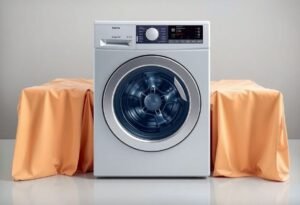Choosing the Right Smart Home Devices
Before diving into integration, the first step is to carefully select the appropriate devices that align with your needs. The market is flooded with a range of options, from smart lighting systems and thermostats to security cameras and locks. Consider what matters most to you: energy savings, security, or convenience. At this stage, it’s also vital to check if the devices you’re considering are compatible with your current home setup.
Assessing Your Existing Setup
Before you start installation, thoroughly assess your existing setup. Ensure that your wiring and electrical system are in good shape. Consulting a professional can help evaluate if your home is ready to accommodate new devices. Key aspects to consider include the number of outlets, the type of wiring, and the availability of Wi-Fi, which is critical for many smart gadgets to function properly.
Integrating with Home Management Systems
Many modern smart home devices require a central management system. You can opt for mobile apps that synchronize the function of all your devices or invest in a comprehensive smart home system. Choose a platform that supports all your devices and facilitates easy updates. Considering solutions that work with voice assistants like Amazon Alexa or Google Assistant can further simplify home management.
The Specifics of Smart Lighting Installation
One of the easiest ways to dive into smart home integration is to implement smart lighting. You can start by replacing standard bulbs with smart options that connect to an app on your phone. This enables control over brightness, color, and even automated on/off settings based on the time of day. Not only does this elevate comfort, but it also helps save energy. Remember, this form of integration is relatively inexpensive and doesn’t require advanced installation skills.
Connecting Smart Thermostats
Investing in smart thermostats is another significant step toward integrating smart home technology. These devices enable efficient temperature management in your home and allow you to tailor your environment to your lifestyle. You can program heating schedules and remotely control the temperature using your smartphone. Beyond convenience, they can lead to lower energy bills, marking a substantial saving over time.
Security and Surveillance Systems
Never underestimate the importance of safety. Integrating smart devices with monitoring or alarm systems provides an invaluable sense of security. You can install smart cameras, motion sensors, or locks that can be controlled remotely. This gives you complete oversight of your home, even when you’re miles away. Such measures not only deter potential intruders but also foster peace of mind.
Conclusion
Integrating smart home devices with your existing setup can be an incredibly rewarding experience that significantly enhances your quality of life. It’s essential to select the right devices, thoroughly assess your current setup, and keep in mind factors like safety and remote control. Let technology accompany you in your everyday life, simplifying it while bringing numerous benefits!
Disclaimer
This article is for informational purposes only and does not substitute professional advice. Always consult a professional before making any changes to your electrical installation or smart home system.

















